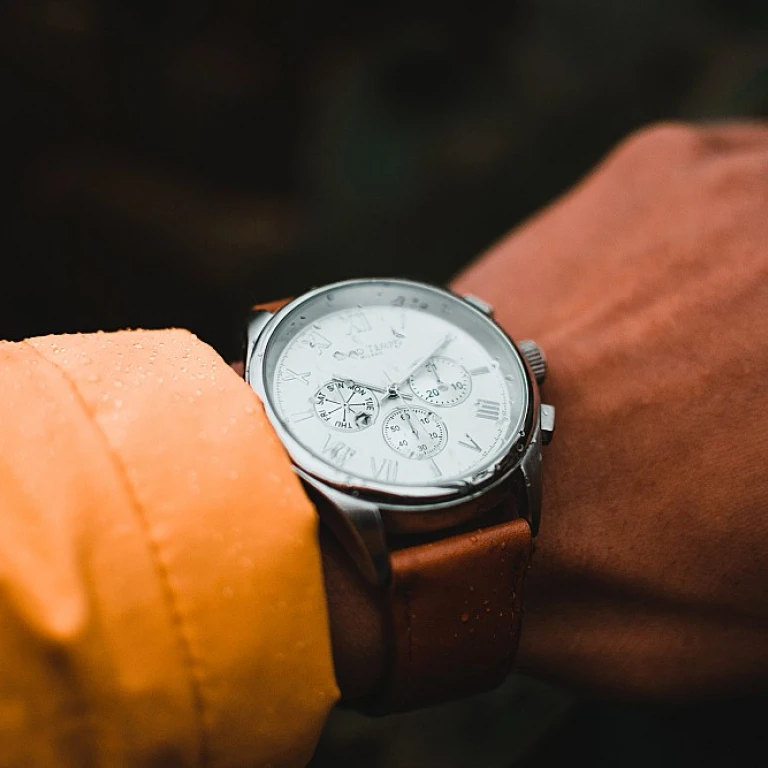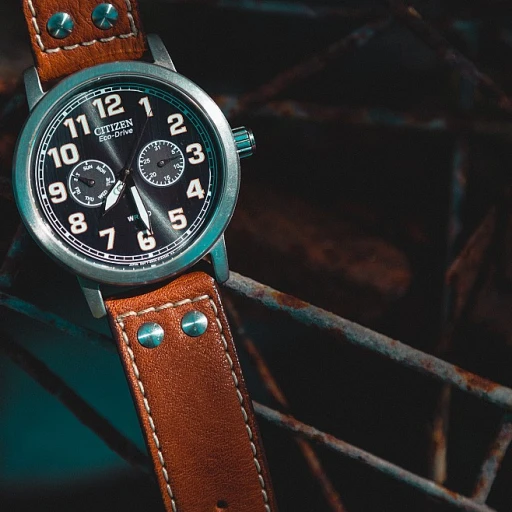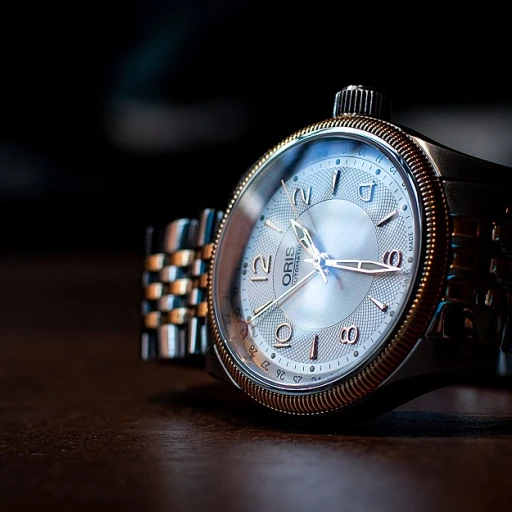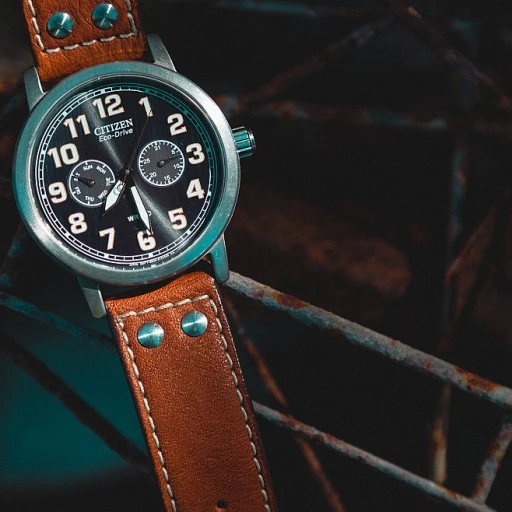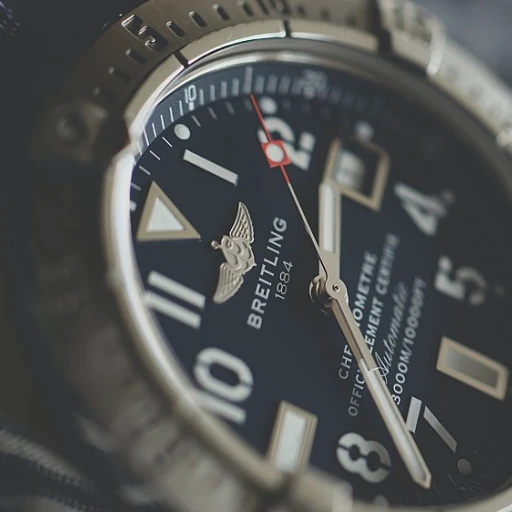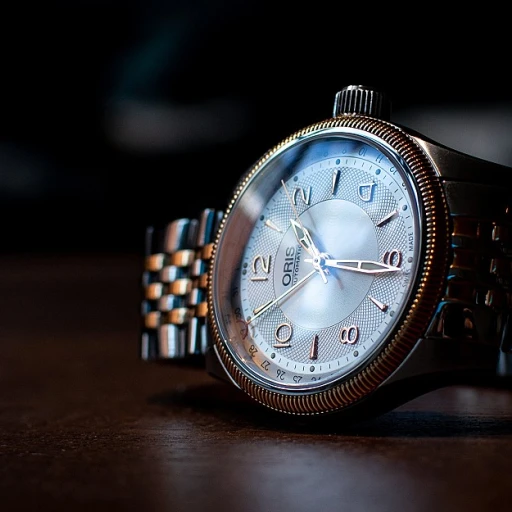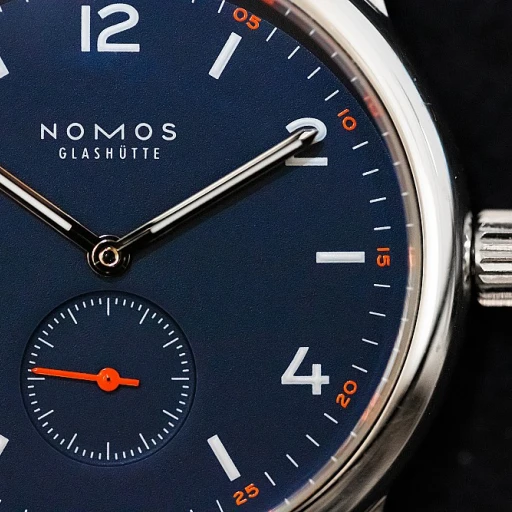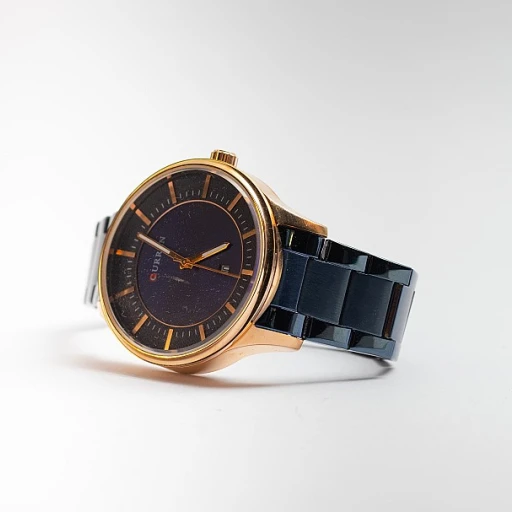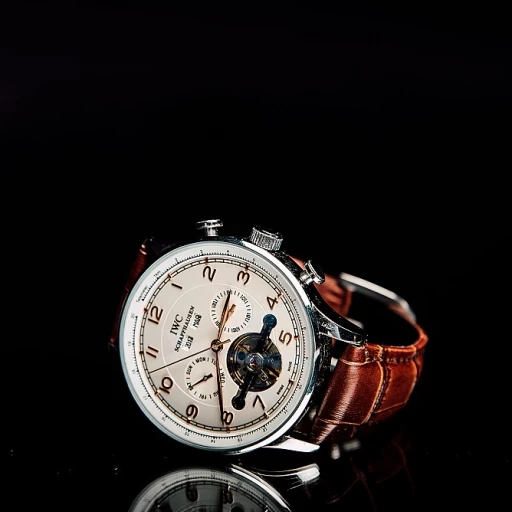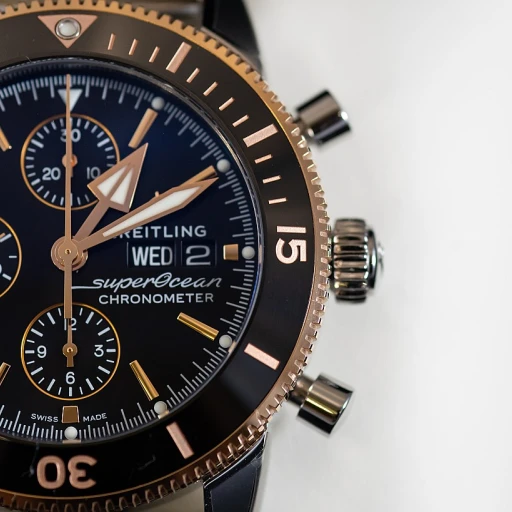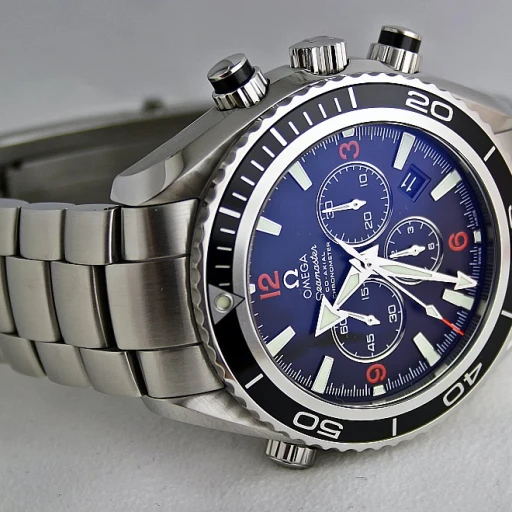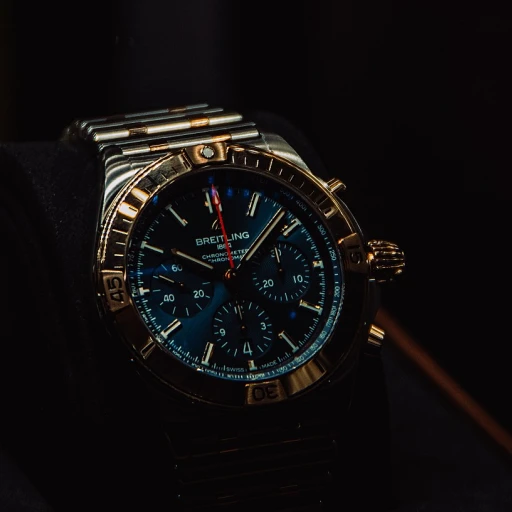
Understanding the Vintage Luxury Watch Market
The Inner Workings of the Vintage Watch Arena
The vintage luxury watch sector is a fascinating expanse that seamlessly blends craftsmanship, history, and financial acumen. For enthusiasts and investors alike, the allure of vintage luxury watches is not just in their aesthetic appeal but in their potential to appreciate in value over time. Each timepiece tells a story, a narrative that's reflected in its design, mechanics, and the hands it has passed through. According to a Knight Frank Luxury Investment Index report, luxury watches had a 5-year appreciation of 60% as of 2020, underscoring their viability as a worthwhile investment.
Chronograph Connoisseurs: How to Select with Savvy
Choosing a vintage timepiece that will enhance your collection requires a keen eye and a depth of knowledge. The caliber of the mechanism, the rarity of the design, and the brand's legacy all play pivotal roles. Iconic models from Patek Philippe or Rolex, for instance, often fetch high returns given their esteemed status and limited production runs. A Patek Philippe Ref. 1518 in steel, for example, sold for a staggering CHF 11 million in 2016, indicating the lofty heights these assets can reach.
Brand Power: Tracking Valuation Surges
Appreciation trends within the vintage watch market frequently align with brand prestige. Research by Art Market Research Developments indicates that renowned brands like Audemars Piguet and Omega have seen an upswing in valuation, partly due to their historical significance and innovations in watchmaking. Models with a storied past, such as Omega's Speedmaster - the 'moonwatch', are especially sought after. As these brands continue to release limited editions and discontinue older models, scarcity drives demand - a key factor for any investor to consider.
Navigating the Market: Mitigating Risk, Maximizing Returns
While the potential for high returns is evident, entering the vintage watch investment space comes with intricacies that require an analytical approach. Authentication, condition, original components, and provenance are just part of the detailed checklist needed to avoid costly pitfalls. Proactively seeking independent appraisals, for instance, not only provides peace of mind but also serves as an essential tool for future resales, as per the Federation of the Swiss Watch Industry. Indeed, due diligence paired with strategic acquisition can result in a diversified portfolio that stands the test of time.
- Understanding Market Dynamics: Analyzing supply-and-demand trends
- Collector's Corner: The significance of original parts
- Investment Timing: Knowing when to buy and sell
Selecting the Right Vintage Timepiece for Your Portfolio
Grasping the Intricacies of Antique Horology
The realm of vintage luxury watches is one that merges history, craftsmanship, and finance into a single, intricate web. This market, although niche, is bustling with enthusiasts and investors alike, seeking not just the exquisite timepieces but also the stories they carry. When you dip your toes into this world, you're not merely buying components encapsulated in a case; you're investing in a legacy. Statistically speaking, the vintage watch market has seen a steady increase in demand, with platforms like Chrono24 reporting a year-on-year growth, indicating a robust and thriving market.
Navigating Through the Provenance and Pedigree of Timeless Watches
To elevate oneself from an aficionado to a savvy collector, an understanding of a watch's provenance is paramount. This encompasses the watch's origin, previous ownership, and its historical significance. According to the latest insights, watches with a noteworthy backstory or those previously owned by celebrities often fetch higher premiums at auctions. For instance, the Paul Newman Rolex Daytona is not just a timepiece; it's a symbol of the man and the era he represented, which is why it commanded a staggering price of $17.8 million at a Phillips auction in 2017.
Deciphering the Aesthetic Allure and Mechanical Mastery
Few investments combine aesthetics with technical mastery as seamlessly as luxury watches do. A vintage Patek Philippe or Rolex isn’t merely a device that tells time; it is a sculpture for the wrist. The artisanship is often unparalleled, and each movement inside the case is a testament to a bygone era of craftsmanship. In this niche, the devil truly lies in the detail. Collectors and investors often look for the rarity of the dial, exclusivity of the model, and intricacy of the movement. Watches with unique dials, such as those featuring military markings or exotic colors, can experience appreciation surpassing that of mainstream models. A rare Patek Philippe with a salmon dial might not just retain its value but could potentially ascend in the investment stratosphere, outperforming indices like the S&P 500.
Embracing the Zeitgeist: Emerging Trends and Timeless Investments
While vintage luxury watches are tethered to the past, they are also a beacon for future trends. Understanding the pulse of the market requires both analytical prowess and a dash of intuition. As an analyst, it's vital to discern which brands have enduring legacies that transcend fleeting fashion. According to Knight Frank's Luxury Investment Index, vintage watches were ranked one of the top collectible assets, with an appreciation rate outperforming art, cars, and wine over the past decade. This statistic underscores the enduring allure of these time-honored treasures and offers a glimpse into future appreciation trends.
Unlocking the Secrets to Premier Watch Investments
Unlike other assets, the liquidity and fungibility of vintage watches make them a fascinating investment venture. A Rolex Submariner, for example, isn't just a symbol of luxury; it's a currency in the world of haute horology. With a global recognition and a standardized value, certain models can almost guarantee stability in one's portfolio. However, it is critical to approach this with a structured strategy, considering factors like rarity, condition, and authenticity — elements that can make or break your investment journey.
Appreciation Trends in Prominent Watch Brands
Identifying the Crown Jewels of Timekeeping
When contemplating the inclusion of a vintage timepiece in your investment portfolio, the discerning collector should be guided by a blend of passionate connoisseurship and shrewd financial acumen. The key is to look for pieces with a significant horological impact, backed by a brand's storied heritage. For instance, the Rolex Submariner, with its pioneering waterproof design, has seen sustained appreciation over the years. By focusing on watches that introduced innovations or epitomized the style of an era, you hone in on pieces that hold both aesthetic appeal and potential for value growth.
Mastering the Art of Rarity and Demand
Scarcity is a fundamental driver of value in the vintage luxury watch market. Limited edition releases, discontinued models, or watches with unique provenance often command premium prices. A striking example is the Omega Speedmaster 'Moonwatch', which saw its desirability skyrocket due to its NASA association. However, investors must balance rarity with demand. A watch too obscure may not attract buyers, so it's crucial to select pieces that resonate with a broader audience. Market research and understanding current trends can provide valuable insights into what collectors are seeking.
Technical Condition and Authenticity: The Pillars of Watch Valuation
As an investor, you must ensure your vintage luxury watch is both mechanically sound and authentic. A watch's condition—including the dial, movement, and case—can significantly influence its value. The presence of original parts and a well-documented service history can enhance a timepiece's worth. It's advisable to consult with certified watchmakers or specialists who can verify the authenticity and provide a thorough assessment. Remember, expert maintenance can prevent depreciation, and in some cases, according to Christie's, restoration by the brand itself can even elevate a watch's collectible status and market price.
Investment Horizon: Timing Your Vintage Acquisition
While the vintage luxury watch market can offer substantial returns, it’s important to acknowledge that it operates on a different tempo than traditional investments. The Knight Frank Luxury Investment Index reports that watches have outperformed other collectibles over a 10-year period, yet this is not a short-term game. Patience is paramount, as the right watch may take years to appreciate significantly. Wise collectors recognize the ebb and flow of market sentiments and are prepared to hold onto their investments through fluctuations, waiting for the perfect moment to realize gains.
Navigating the Auction Block: A Strategy for the Astute Investor
Auctions can be a goldmine for acquiring distinguished vintage watches, but they require a strategic approach. Top auction houses like Sotheby's and Phillips have seen record-breaking sales in recent years, underscoring the strength of the market. To excel in this arena, familiarize yourself with the auction process and past sales. Peruse catalogs and attend previews to inspect potential purchases personally. Lastly, set a budget and stick to it, as the competitive environment of an auction can lead to emotional bidding and overvaluation. By carefully planning your auction strategy, you stand to secure a timeless asset at a price that reflects its true investment potential.
Risks and Rewards: Best Practices for Investing in Vintage Watches
Tracking the Upsurge of Heritage Watch Brands
For luxury watch enthusiasts and investors alike, understanding the appreciation trends of prominent watch brands is crucial. Remarkably, specific heritage brands have shown a consistent increase in value over the years. Notably, manufacturers like Rolex and Patek Philippe stand as stalwarts in the industry, with vintage models from these makers often seeing appreciation rates between 5% to 15% annually, according to recent auction results. A Rolex Daytona, once owned by Paul Newman, fetched $17.8 million in a 2017 Phillips auction, showcasing the potential for astronomical returns on investment.
Case Study: The Iconic Rolex Submariner
Analyzing the trajectory of specific models can provide invaluable insight. Take the Rolex Submariner, for instance, its design virtually unchanged since the 1950s, this model's appreciation over time has been remarkable. Early references like the 5512 or the 5513 have experienced a value increase of over 200% in the last two decades, as noted by leading auction houses. This trend is a testament to the timeless appeal of well-crafted luxury watches and the wisdom of investing in iconic pieces.
Rise and Shine: The Patek Philippe Phenomenon
Similarly, Patek Philippe's vintage pieces have garnered record-breaking figures. The Ref. 1518 in stainless steel, one of Patek Philippe's most coveted models, realized a staggering price of over $11 million at a Geneva auction. This price point reflects not only the scarcity but also the histories and emotional stories bound with these vintage masterpieces, which serve to amplify their allure to collectors and investors globally.
Diversification within the Watch Portfolio
- Rolex GMT-Master – Love for the Aviation Heritage
- Omega Speedmaster – A Space Exploration Legacy
- Audemars Piguet Royal Oak – Defining Luxury Sports Chic
Diversifying your vintage luxury watch portfolio is essential to mitigate risk and maximize potential gains. Some strategic collectors also consider the stories behind models such as the Rolex GMT-Master, known for its aviation heritage, or the Omega Speedmaster, which boasts a history linked to NASA's space missions. This level of detail is crucial; collectors and investors should contemplate not only the potential financial appreciation but also the unique narrative each timepiece presents.
Statistical Signposts for Watch Investments
When it comes to investing in vintage luxury watches, the numbers speak volumes. The collectible watch market has seen an average compound annual growth rate (CAGR) of around 8% over the last decade, outstripping many traditional investment classes. These statistics invite a closer examination of market fluctuations and highlight the importance of staying informed on current trends. By analyzing data points, investors can make calculated decisions about when to acquire or divest from a particular vintage piece.
